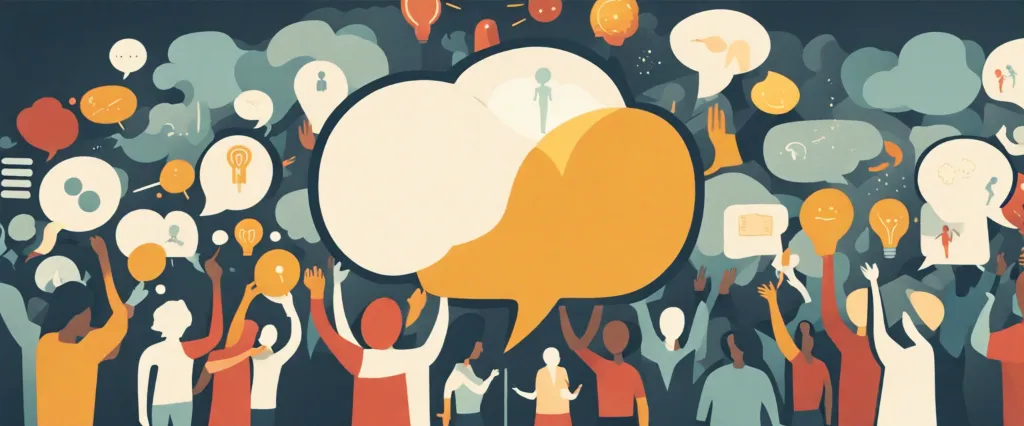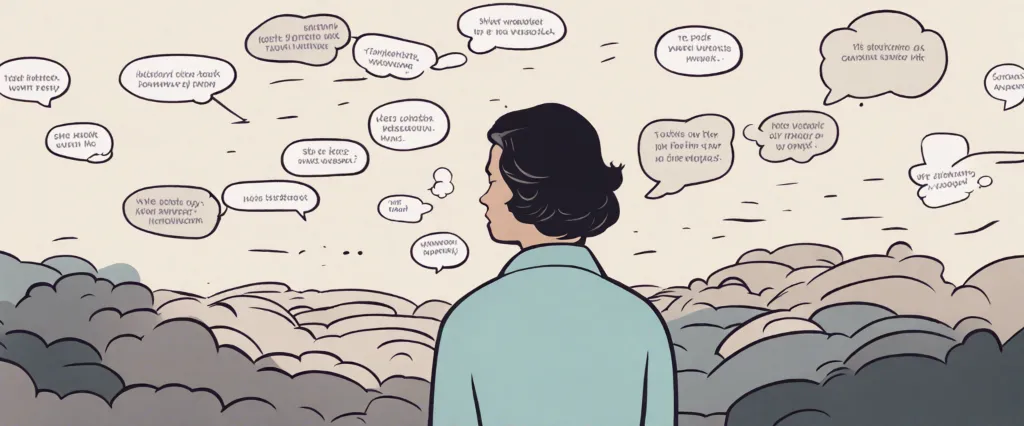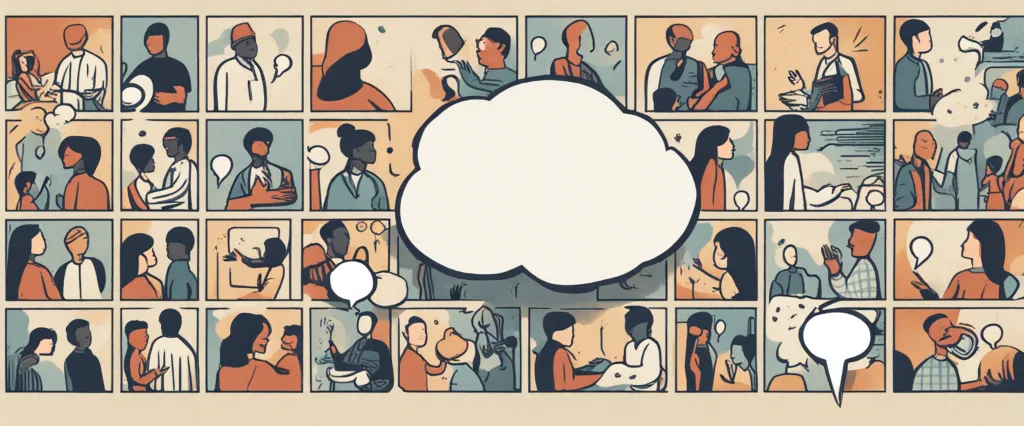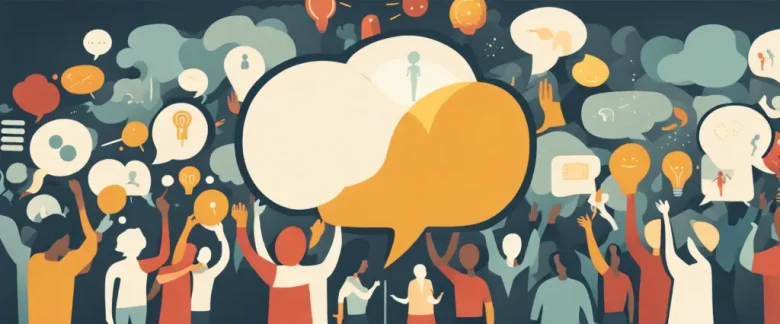
In his influential book, “The Social Animal,” renowned social psychologist Elliot Aronson delves into the complex interplay between individual behavior and the social forces that shape our lives. With a deep understanding of human nature and a wealth of research studies, Aronson explores the intricacies of human behavior, shedding light on why we act the way we do in different social contexts. Drawing from a range of disciplines, he presents a comprehensive examination of social psychology, offering readers a profound understanding of both the individual and the collective. As a highly regarded expert in the field, Aronson’s work has significantly contributed to our understanding of social behavior and its implications for society.
Chapter 1: The Social Animal: Exploring Human Nature and Social Influence
Chapter 1 of “The Social Animal: Exploring Human Nature and Social Influence” by Elliot Aronson introduces the reader to the fundamental themes and concepts of social psychology. Aronson presents the idea that understanding human nature and behavior necessitates examining the intricate interplay between individuals and their social environment.
The chapter starts by delving into the exploration of social psychology, highlighting the importance of understanding how people think and behave in social contexts. Aronson emphasizes that people often mistakenly attribute behavior solely to an individual’s personality traits, neglecting the powerful influence of social factors. He argues that human behavior is profoundly shaped by the social situation, resulting in a complex web of social interactions.
The author introduces the concept of the “social animal,” which represents the idea that humans are fundamentally social beings, deeply affected by the people around them. Aronson discusses how our interactions with others impact our thoughts, emotions, and behavior, ultimately shaping our identity.
Aronson then delves into the power of social influence, addressing how people are influenced by others in various ways. He explores the principles of conformity, discussing Solomon Asch’s famous experiment that revealed people’s tendency to conform to the opinions of others, even when they knew the majority was wrong. The author also examines the concepts of obedience, obedience to authority, and disobedience, using Stanley Milgram’s shocking experiments as examples.
Lastly, Aronson introduces the concept of the “fundamental attribution error,” which refers to our tendency to attribute others’ behavior to internal characteristics, such as personality, while ignoring the impact of situational factors. He argues that this cognitive bias often leads to misconceptions and misunderstanding between individuals.
In conclusion, Chapter 1 provides an overview of the key themes and concepts of social psychology, highlighting the importance of understanding human behavior within the context of social influence and interaction.
Chapter 2: The Self: Understanding Identity and Self-Perception
Chapter 2: The Self: Understanding Identity and Self-Perception of the book “The Social Animal” by Elliot Aronson delves into the concept of the self and its role in shaping our identity and self-perception. Aronson presents the self as a complex and multifaceted entity that encompasses various aspects of our lives.
The chapter begins by highlighting that the self is not a fixed and static construct, but rather a dynamic entity that evolves and adapts over time. Aronson explores how our self-concept is shaped by both our personal experiences and the social context in which we exist. He emphasizes that our sense of self is not solely based on our own perceptions, but also heavily influenced by how others perceive us.
The author introduces the idea of social comparison, where we evaluate ourselves by comparing our abilities, opinions, and characteristics to those of others. This process helps us to define our self-worth and establish our place in society. Aronson further explains that individuals tend to engage in social comparison with others who are similar to them or hold a high social status.
The chapter also explores self-esteem, a crucial aspect of the self-concept. Aronson explains how self-esteem is strongly influenced by both internal factors, such as personal achievements, and external factors, such as social recognition and approval. He also discusses the concept of narcissism and its impact on self-esteem, highlighting how excessive self-focus can lead to inflated egos and a lack of empathy for others.
In conclusion, Chapter 2 provides a comprehensive overview of the self as a dynamic entity that is shaped by personal experiences and societal factors. It introduces concepts like social comparison, self-esteem, and narcissism, shedding light on how our self-perception and identity are influenced by our interactions with others.
Chapter 3: Conformity and Obedience: The Power of Social Pressure
Chapter 3 of “The Social Animal” by Elliot Aronson explores the concepts of conformity and obedience, highlighting the powerful influence of social pressure on individuals’ behavior. Aronson delves into various psychological experiments and real-world scenarios to explain the mechanisms behind these phenomena.
The chapter begins by examining a classic experiment conducted by Solomon Asch. Asch’s experiment involved presenting a line to participants and asking them to compare it to three other lines of different lengths. The catch was that all the other participants, who were confederates, intentionally provided incorrect answers. The results showed that individuals often conformed to the majority, even if the correct answer was apparent. Aronson explains this conformity as a result of the need for social approval and fear of being deviant. He emphasizes the power of the group in shaping individual behavior.
Aronson then moves on to discuss compliance and obedience, focusing on Stanley Milgram’s controversial experiments. Milgram’s studies involved participants administering electric shocks to another person in accordance with the instructions of an authority figure. Despite the potential harm caused to the other person, participants complied with orders to continue the shocks, highlighting the startling extent of obedience to authority.
The author explores the factors that influence conformity and obedience, including ambiguity, group size, and unanimity. He also elucidates the role of normative social influence, which is driven by the desire to be liked and accepted, as well as informational social influence, where individuals conform due to the belief that others possess more accurate information.
Aronson concludes the chapter by discussing the dark side of conformity and obedience, citing historical events such as the Holocaust and the atrocities committed by the Nazis. He underscores the importance of understanding these phenomena in order to prevent the manipulation of individuals by powerful authority figures or societal pressures.
In essence, Chapter 3 of “The Social Animal” emphasizes the pervasive influence of social pressure on human behavior, shedding light on the mechanisms of conformity and obedience and their implications for both individual actions and society as a whole.
Chapter 4: Attitudes and Persuasion: How Beliefs and Opinions Are Shaped

Chapter 4 of “The Social Animal” by Elliot Aronson explores the process of how beliefs and opinions are formed and influenced through attitudes and persuasion. Attitudes are defined as evaluations or judgments made towards people, issues, or objects that can be positive, negative, or neutral. They can be shaped through various social factors and experiences.
The chapter begins by discussing the different components of attitudes: cognitive, affective, and behavioral. The cognitive component refers to the beliefs and thoughts one has about a particular topic, while the affective component deals with the emotional response or feelings associated with that topic. The behavioral component relates to the actions or behaviors influenced by one’s attitude.
Aronson further explains how attitudes are formed and maintained through socialization, conditioning, and cognitive processes. Socialization involves the influence of family, friends, and cultural norms in shaping one’s attitudes. Conditioning refers to the association of positive or negative experiences with certain stimuli, leading to the formation of attitudes. Cognitive processes, such as selective exposure and self-perception, also play a role in attitude development.
The chapter then delves into the power of persuasion as a means to change or reinforce attitudes. Persuasion techniques, including social proof, authority, scarcity, and reciprocity, are explored. The effectiveness of persuasive messages is influenced by factors such as the credibility of the source, the strength of the message arguments, and the characteristics of the audience.
In summary, Chapter 4 of “The Social Animal” illustrates how attitudes are formed, influenced, and changed through a combination of socialization, conditioning, and cognitive processes. It highlights the importance of understanding the components of attitudes and the role of persuasion in shaping beliefs and opinions.
Chapter 5: Prejudice and Discrimination: Examining Bias and Inequality
Chapter 5 of “The Social Animal” by Elliot Aronson focuses on the topics of prejudice and discrimination, aiming to examine the biases and inequalities prevalent in society. The chapter explores how biases form, how they are maintained, and the consequences they have on individuals and groups.
Aronson explains that prejudices often arise from various sources, including socialization, cultural norms, and personal experiences. People tend to categorize others based on observable characteristics such as race, gender, age, and religion, which can lead to stereotypes and biases. These biases not only distort individual perceptions but also contribute to discrimination and inequality.
The chapter delves into the mechanics of prejudice, explaining how social categorization leads to the formation of in-groups and out-groups. In-group bias emerges when individuals favor members of their own group, leading to the perception of out-groups as less favorable or even inferior. Aronson emphasizes that these biases are not innate but are learned through the socialization process.
Furthermore, the chapter explores the consequences of prejudice and discrimination, both for the oppressed and the oppressor. Discriminated individuals often experience lower self-esteem, diminished opportunities, and unequal treatment, which can perpetuate cycles of inequality. On the other hand, the oppressor may suffer cognitive dissonance, moral guilt, or social stigma for their discriminatory behavior.
To address these biases, Aronson provides insights on reducing prejudice. Contact hypothesis suggests that personal interactions between members of different racial, ethnic, or religious groups can help diminish biases. Education, exposure to diversity, and changing institutional policies are also effective strategies for combating prejudice.
Overall, Chapter 5 of “The Social Animal” highlights the various factors contributing to prejudice, discrimination, and inequality in society, while offering potential solutions to promote fairness and inclusivity. Understanding the roots and impacts of biases is crucial for fostering a more equitable and harmonious world.
Chapter 6: Interpersonal Attraction: Exploring Relationships and Love
Chapter 6 of “The Social Animal” delves into the topic of interpersonal attraction, specifically exploring relationships and love. The author, Elliot Aronson, discusses various factors that contribute to the development of attraction and the formation and maintenance of romantic relationships.
Aronson begins by highlighting physical attractiveness as a significant factor in initial attraction. He explains how physical attractiveness is often subjective but does play a role in our perceptions of others. However, he also emphasizes that other factors, such as similarity, proximity, and reciprocal liking, are equally important in determining attraction.
The chapter then delves into the concept of similarity. Aronson explains that individuals are naturally drawn to others who share similar attitudes, values, interests, and backgrounds. This attribute creates a sense of comfort and familiarity, making it easier to establish connections and maintain relationships over time.
Aronson also explores the impact of proximity on attraction. He explains that physical proximity increases the likelihood of interaction, which, in turn, leads to the development of relationships. This proximity effect can be seen in various settings, from college dorms to apartment buildings, where individuals who are physically close to each other are more likely to form friendships or romantic relationships.
Furthermore, the author explores the concept of reciprocal liking, which suggests that people are more attracted to those who express a liking towards them. This mutual exchange of positive feelings and validation strengthens the bond between individuals and enhances the probability of a continued relationship.
Aronson concludes the chapter by introducing the triangular theory of love, which categorizes love into three components: intimacy, passion, and commitment. He explains how these components interact and change over time, influencing the nature and longevity of romantic relationships.
Overall, Chapter 6 of “The Social Animal” provides a comprehensive understanding of the factors that promote interpersonal attraction, highlighting the role of physical attractiveness, similarity, proximity, and reciprocal liking. It further explores the complexities of love and how different components contribute to the formation and maintenance of relationships.
Chapter 7: Helping and Altruism: Understanding Prosocial Behavior
Chapter 7 of “The Social Animal” by Elliot Aronson explores the concept of helping and altruism, with a focus on understanding the underlying factors that drive prosocial behavior. The chapter begins by discussing the selflessness and empathy that can lead individuals to assist others in need.
Aronson highlights the influence of situational factors on helping behavior, emphasizing the importance of noticing the situation and interpreting it as an emergency. He introduces the concept of the “bystander effect,” which suggests that the presence of others can decrease the likelihood of an individual offering help due to diffusion of responsibility. However, he also sheds light on various factors that can overcome this effect, such as feeling personal responsibility or having a strong repute for helpfulness.
The chapter delves into the influence of social norms on helping behavior, highlighting how individuals tend to follow societal expectations. Aronson introduces the concept of reciprocity, explaining how humans have a tendency to help those who have previously helped them, or those who they believe will reciprocate the favor in the future.
Additionally, Aronson discusses the role of empathy in motivating helping behavior. He argues that individuals with higher empathetic concerns are more likely to engage in prosocial behavior, as they are genuinely concerned about others’ well-being.
Furthermore, the chapter explores the impact of mood on helping behavior. Aronson explains that positive moods increase the likelihood of individuals helping others, while negative moods might either inhibit or increase helping, depending on the circumstances.
Overall, Chapter 7 of “The Social Animal” explores the complex interplay of situational, societal, and emotional factors that influence helping behavior. It sheds light on the underlying motivations and conditions that drive individuals to assist others in need.

Chapter 8: Aggression and Conflict: Exploring the Dark Side of Human Behavior
Chapter 8 of “The Social Animal” by Elliot Aronson explores the topics of human aggression and conflict, focusing on the darker aspects of human behavior. The chapter emphasizes that aggression is a common and natural response in certain situations, but it can also be destructive and harmful.
Aronson delves into the psychological theories and explanations behind aggression, starting with the instinct theory. This theory suggests that humans have innate aggressive instincts that drive them to act aggressively. However, Aronson argues against the pure instinct theory, stating that aggression is also influenced by social learning, environmental factors, and individual differences.
The chapter also discusses frustration-aggression theory, which suggests that aggression is a result of frustration when individuals are prevented from achieving their goals. Aronson explains that while frustration can indeed lead to aggression, it is not the sole cause and not all frustrated individuals become aggressive.
Additionally, the chapter explores the role of socialization and cultural influences in aggression. Aronson highlights that aggressive behaviors can be learned through social modeling and observation, and aggression can be reinforced or punished by the social environment.
Moreover, the chapter examines conflict resolution and negotiation strategies as alternatives to aggression. Aronson emphasizes the importance of empathy, communication, and compromise in resolving conflicts peacefully and achieving win-win solutions.
In summary, Chapter 8 of “The Social Animal” provides an in-depth exploration of aggression and conflict. Aronson highlights the complex nature of aggression, debunking simplistic explanations and emphasizing the various factors that contribute to aggressive behaviors. Ultimately, the chapter stresses the importance of understanding and managing aggression in order to promote a more peaceful and harmonious society.
After Reading
In “The Social Animal” by Elliot Aronson, the author explores the complexities of human behavior, delving into the psychological factors that shape who we are and the social influences that guide our decisions. Aronson provides a comprehensive examination of topics such as conformity, persuasion, love, happiness, and aggression, offering compelling insights backed by empirical research. Throughout the book, he emphasizes the significance of empathy, compassion, and understanding in fostering mutual respect and establishing meaningful connections. Aronson’s engaging storytelling and thought-provoking analysis make “The Social Animal” a valuable resource for anyone seeking to comprehend the intricate dynamics of human interactions. Ultimately, the book underscores the importance of recognizing our shared humanity and harnessing the power of social influence to create positive change in both individual lives and society as a whole.
1. Thinking, Fast and Slow” by Daniel Kahneman – This book explores the two systems of thinking that drive our decision-making processes, delving into the biases and heuristics that can often lead us astray. It offers fascinating insights into the inner workings of our minds and how they influence our choices.
2. Influence: The Psychology of Persuasion” by Robert B. Cialdini – Drawing on decades of research, this book examines the principles of persuasion and how they are utilized by marketers, salespeople, and even individuals in our everyday interactions. It provides valuable knowledge on how to protect ourselves against manipulative techniques and become more effective communicators.
3. Nudge: Improving Decisions About Health, Wealth, and Happiness” by Richard H. Thaler and Cass R. Sunstein – Exploring the concept of “nudging,” this book reveals how small changes to the way choices are presented can have a profound impact on decision-making. It highlights the power of design and behavioral economics in guiding individuals towards making better choices for themselves and society.
4. Predictably Irrational: The Hidden Forces That Shape Our Decisions” by Dan Ariely – Through a series of captivating experiments, Ariely uncovers the irrationalities that govern our decision-making processes, such as the impact of emotions, social norms, and various biases. This enlightening read challenges our assumptions about rationality and sheds light on the subconscious forces driving our choices.
5. “Thinking in Bets: Making Smarter Decisions When You Don’t Have All the Facts” by Annie Duke – Using her experience as a professional poker player, Duke presents a unique perspective on decision-making and risk assessment. She emphasizes the importance of thinking probabilistically and embracing uncertainty to make better decisions in both personal and professional contexts.
These five books, including “The Undoing Project” by Michael Lewis, “Social” by Matthew D. Lieberman, and “Irrational Exuberance” by Robert J. Shiller, offer a comprehensive exploration of human decision-making, social influence, and the various biases that shape our choices. Reading them alongside “The Social Animal” by Elliot Aronson will provide you with a well-rounded understanding of the fascinating field of behavioral psychology and its applications in our everyday lives.



